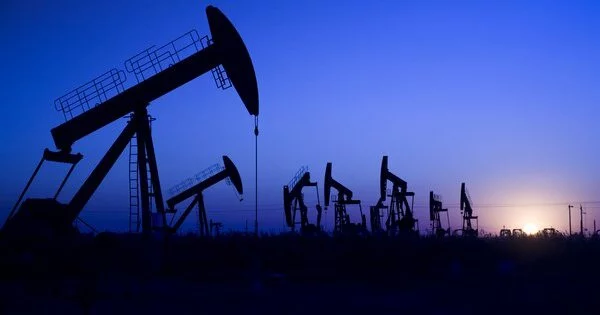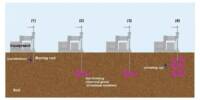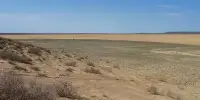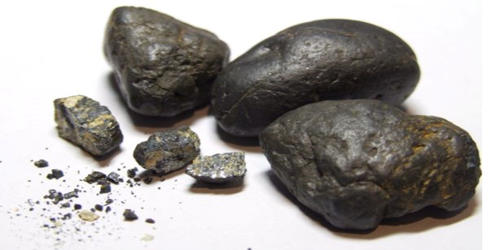Researchers are leading an international team tasked with developing a framework to assist governments in the United States and around the world in assessing and prioritising remediation strategies for orphaned oil and gas wells. These inactive wells pose environmental risks because they have the potential to contaminate water supplies, degrade ecosystems, and emit harmful methane and other air pollutants. However, plugging the wells offers a variety of potential environmental benefits, such as underground storage of carbon dioxide and hydrogen, or the development of geothermal energy systems.
Researchers from McGill University are leading an international team whose goal is to develop a framework to assist governments in the United States and around the world in assessing and prioritising remediation strategies for orphaned oil and gas wells.
These inactive wells pose environmental risks because they have the potential to contaminate water supplies, degrade ecosystems, and emit harmful methane and other air pollutants. However, plugging the wells offers a variety of potential environmental benefits, such as underground storage of carbon dioxide and hydrogen, or the development of geothermal energy systems.
This analysis shines a light on the need to find, prioritize, plug and remediate orphaned wells – which are often located in close proximity to millions of Americans’ homes – and the major task ahead to understand and mitigate their environmental impacts.
Adam Peltz
Dealing with orphaned wells – an incomplete picture and insufficient money
There are hundreds of thousands of orphaned oil and gas wells in the United States, at least 400,000 in Canada, and tens of millions worldwide. Because the former owners of these abandoned wells cannot be found or cannot clean up the wells, the responsibility for plugging the wells typically falls to governments, which may require additional information on how to best manage the orphaned wells.
The United States government allocated $4.7 billion USD in November 2021 as part of the Bipartisan Infrastructure Law (BIL) to plug orphaned oil and gas wells across the country.
“While this sounds like a lot of money, we estimate that the costs of plugging the documented orphaned wells in the U.S. will exceed this sum by 30-80% or possibly more,” says Mary Kang, an Assistant Professor in the Department of Civil Engineering at McGill University and the senior and lead author of the paper published today in Environmental Research Letters which lays out some of the environmental risks and opportunities of various remediation strategies, as well as the information that still needs to be gathered.
“And it will certainly not cover the large number of undocumented orphaned wells whose existence we know of but whose exact location and depth remain unknown. Because tens of thousands of wells will be plugged in a matter of years, we need to quickly develop a framework and environmental monitoring datasets to prioritise wells for plugging.”
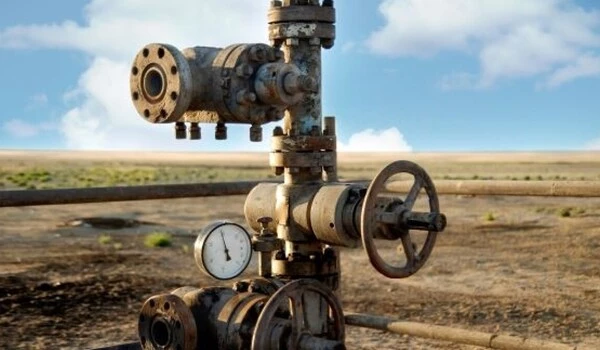
Over 4.5 million Americans live close to unplugged gas or oil wells
The researchers examined data for over 80,000 documented orphaned oil and gas wells in the United States, as well as available socioeconomic, environmental, and natural resource data, to gain a sense of the larger impacts of these wells and help inform government policies. Hundreds of thousands more of these abandoned wells dot the landscape.
They discovered that over 4.6 million Americans (or approximately 13% of the population) live within one kilometre (approximately 12 mile) of one of the more than 80,000 documented orphaned gas or oil wells in the United States. At the national level, there was an over-representation of Hispanic/Latino and Native American populations among this population. The researchers also discovered that more than one-third of these wells are located about 1km (or 1/2 mile) from domestic groundwater well, though they note that there is currently insufficient data on the potential health risks associated with orphaned wells.
“Recent studies have identified air, water and human health hazards of orphaned oil and gas wells however the literature is not yet extensive enough to quantify the risks of this legacy infrastructure across the country,” adds Seth Shonkoff at PSE Healthy Energy.
Environmental opportunities – wind power, subsurface gas storage, and geothermal development
The subsurface is a natural resource just like any other, and many current and future applications will require access to subsurface reservoirs that are not contaminated by oil or gas leakage. For example, the researchers discovered that the majority of documented orphaned wells (91%) are in areas where geologic formations offer subsurface storage potential for carbon dioxide, hydrogen, and natural gas, as long as security standards are met.
The researchers also propose that, rather than restoring the surface to pre-development conditions, the land could be repurposed to generate wind power, as nearly 75% of the orphaned wells are in areas with high wind capacity. Furthermore, approximately 33% of orphaned wells are located in areas such as North Dakota that are considered moderately favourable to geothermal systems, while 1% are located in areas such as Utah, Colorado, and California that are considered most favourable for geothermal development.
“This analysis shines a light on the need to find, prioritize, plug and remediate orphaned wells — which are often located in close proximity to millions of Americans’ homes – and the major task ahead to understand and mitigate their environmental impacts,” said Adam Peltz, Director and Senior Attorney at Environmental Defense Fund.
“As plugging programmes funded by the Bipartisan Infrastructure Act ramp up, this study provides an unprecedented examination of the nature of the documented orphaned well population at a critical time.” These findings also highlight the significance of the pending Abandoned Well Remediation Research and Development Act (AWRRDA) bill in Congress, which has the potential to accelerate research to find and remediate the hundreds of thousands of undocumented orphaned wells across the United States.”
